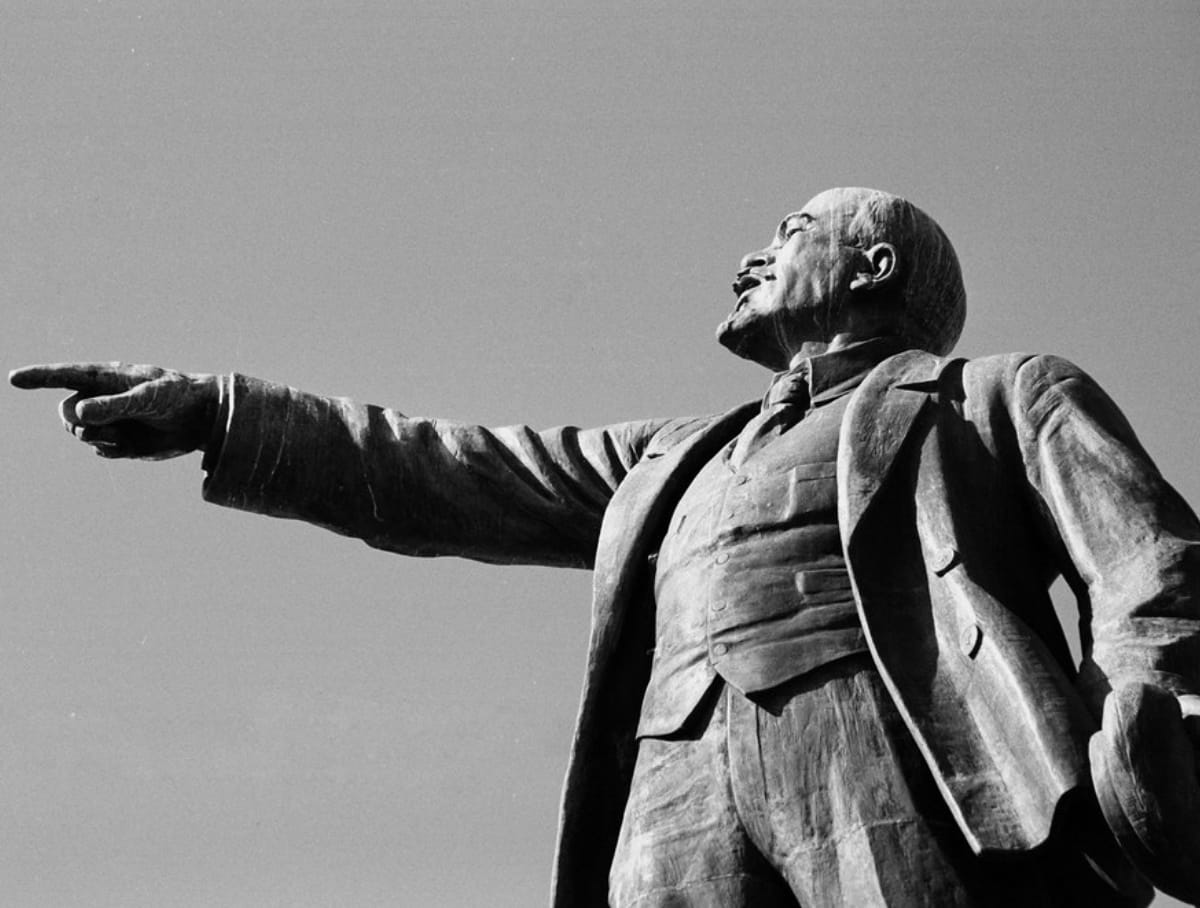In Western media you can find a quote about the method of studying a supposed enemy, attributed to the founder of the Soviet state. We checked whether Vladimir Lenin said this.
March 14, 2022 Bloomberg columnist Adrian Wooldridge in article entitled “The West underestimated Russia. This mistake should not be repeated with China" wrote: "Lenin advised his followers to 'probe with the bayonet. If you hit flesh, continue. If you hit steel, stop.'"
Wooldridge was far from the first to invoke this quote. Repeatedly her used journalists from The Washington Post. In December 2021, also discussing Russia’s tactics in relations with the West, the statement brought Fox News correspondent Rebecca Grant mentioned the specific year of its appearance - 1917. Next month phrase attributed Lenin was already the former Minister of National Defense of Poland Romuald Sheremetyev. And the highest-ranking person from whose lips this maxim with a reference to Lenin sounded, became back in 1977, former US President Richard Nixon.
If you study the history of the spread of this phrase in the West, you will notice that it began to circulate widely exactly after the series interview Richard Nixon to British journalist David Frost in the spring of 1977. The interviews became so popular that many years later they were first reworked into a successful play, and then into the 2008 film nominated for five Oscars "Frost vs. Nixon". In 1978, Nixon “enshrined” this phrase in his autobiographies, and since then the “Leninist” method of determining the strength of the enemy has been mentioned by American figures of various ranks - from a fighter for tax cuts Grover Norquist to Governor of Wisconsin Scott Walker.
However, even before Nixon, the statement attributed to Lenin was quoted several times in the American press, and in most cases this was done by the same person - journalist Joseph Alsop (in particular, in 1970, 1973 And 1975 years). In each case, Alsop's article was reprinted by many regional newspapers, so it was thanks to the journalist that Richard Nixon could have learned about this phrase, especially considering that the 1973 article was dedicated to the impending resignation of the American president. It seems that it was to Joseph Alsop that we owe the catchphrase about the “Lenin method” of pulp and steel to circulation in the West.

But what about Vladimir Lenin himself? A study of the literature related to him shows that the leader of the world proletariat does not have such a quote. Such Russian-language resources as "Ukraina.ru", "Red Spring", Regnum - following the above-mentioned statements of Wooldridge, Sheremetyev and Grant. But was there really smoke without fire this time? As it turns out, no. A transcript of Lenin's speech with a report on the activities of the Central Committee of the RCP(b) at the IX Conference of the RCP(b) on September 20, 1920 has been preserved. A significant part of his speech was devoted to Soviet-Polish war, which began in 1919 after the withdrawal of German troops from a large part of Eastern Europe. And in two places at once speeches Lenin mentioned the notorious “probing with the bayonet”:
- “We decided to use our military forces to help the Sovietization of Poland. This led to further general policy. We did not formulate this in an official resolution recorded in the minutes of the Central Committee and representing the law for the party until the new congress. But among ourselves we said that we must probe with bayonets to see if the social revolution of the proletariat has matured in Poland?
- “To what extent have we been able to test with a bayonet Poland’s readiness for a social revolution? We must say that this readiness is small. To probe with a bayonet meant to gain direct access to the Polish farm laborers and the Polish industrial proletariat, since they remained in Poland.”
At the time of Lenin’s speech, the war was in full swing, and it ended in March 1921 with the signing of a rather painful agreement for the RSFSR Riga Treaty, according to which vast lands in the west of modern Ukraine and Belarus with a predominant non-Polish population, as well as part of the territories of other provinces of the Russian Empire, went to Poland. Later Leon Trotsky will write about this speech: “We took the risk - this time on Lenin’s initiative - of probing bourgeois-gentry Poland with a bayonet. We were pushed back."
Later, the phrase about “probing Poland with a bayonet” spread throughout literature, and, as is obvious, it was from this that the aphorism attributed to Lenin was born. It’s easy to imagine how this very specific statement was transformed into “advice to followers,” but where did the words about pulp and steel come from? Most likely, the basis for the second part was the old sapper practice. At a time when mine detectors had not yet become widespread, these specialists walked in dense rows across the territory, poking bayonets into the ground. While the bayonet was freely piercing the ground, it was lowered to the ground, but if it came across something hard and metal, then the procedure had to be stopped and checked by touch to see if it was a mine.
Thus, the aphorism about the method of testing the enemy with a bayonet is a distorted statement of Lenin about Poland, to which a second part was added. In this version, the phrase became famous in the West in the 1970s, at the instigation of American journalist Joseph Alsop and ex-President Richard Nixon.
Cover image: flickr.com
Mostly not true
Read on topic:
Doubletalk: The Language, Code, and Jargon of a Presidential Election
If you find a spelling or grammatical error, please let us know by highlighting the error text and clicking Ctrl+Enter.






